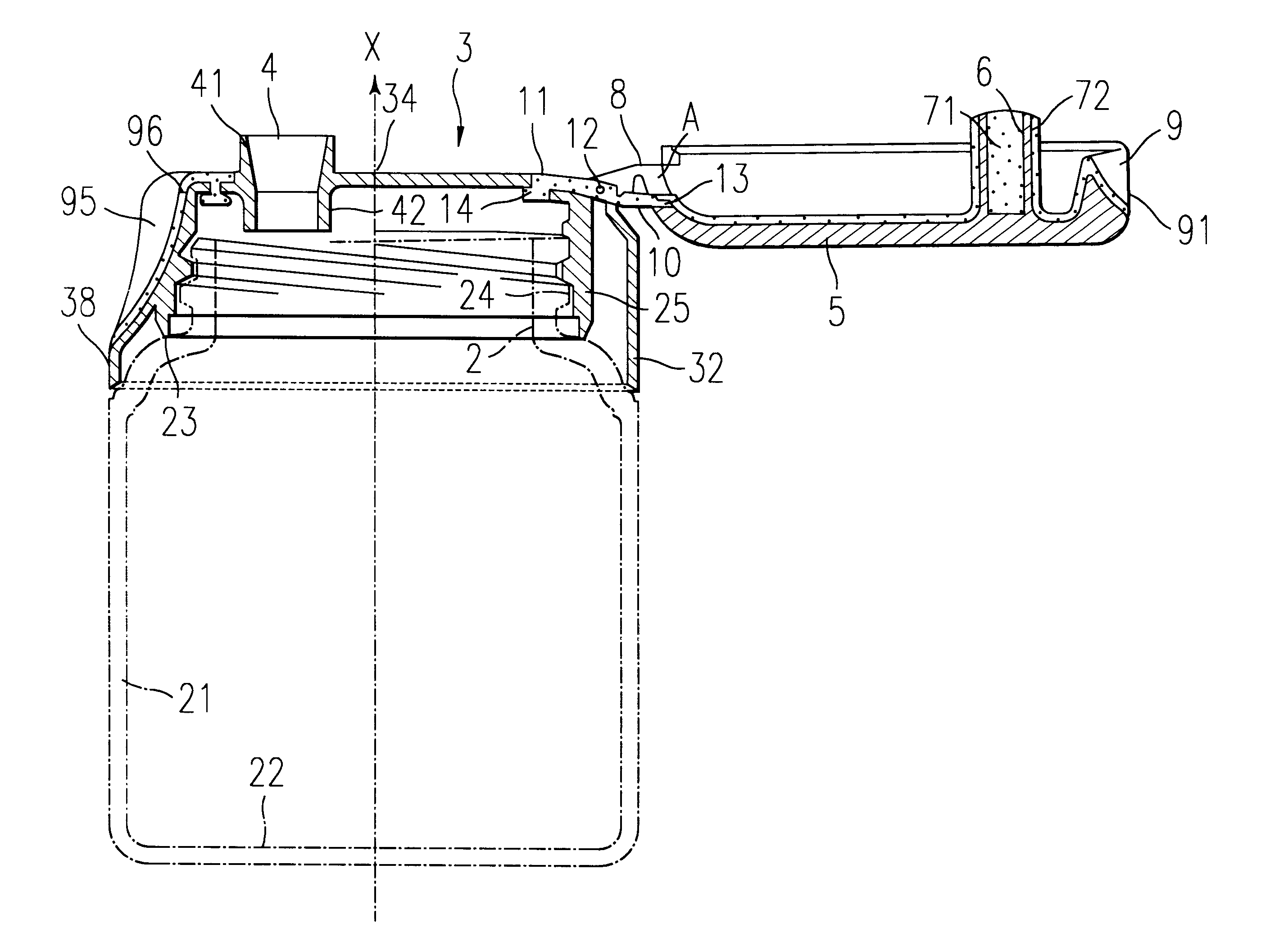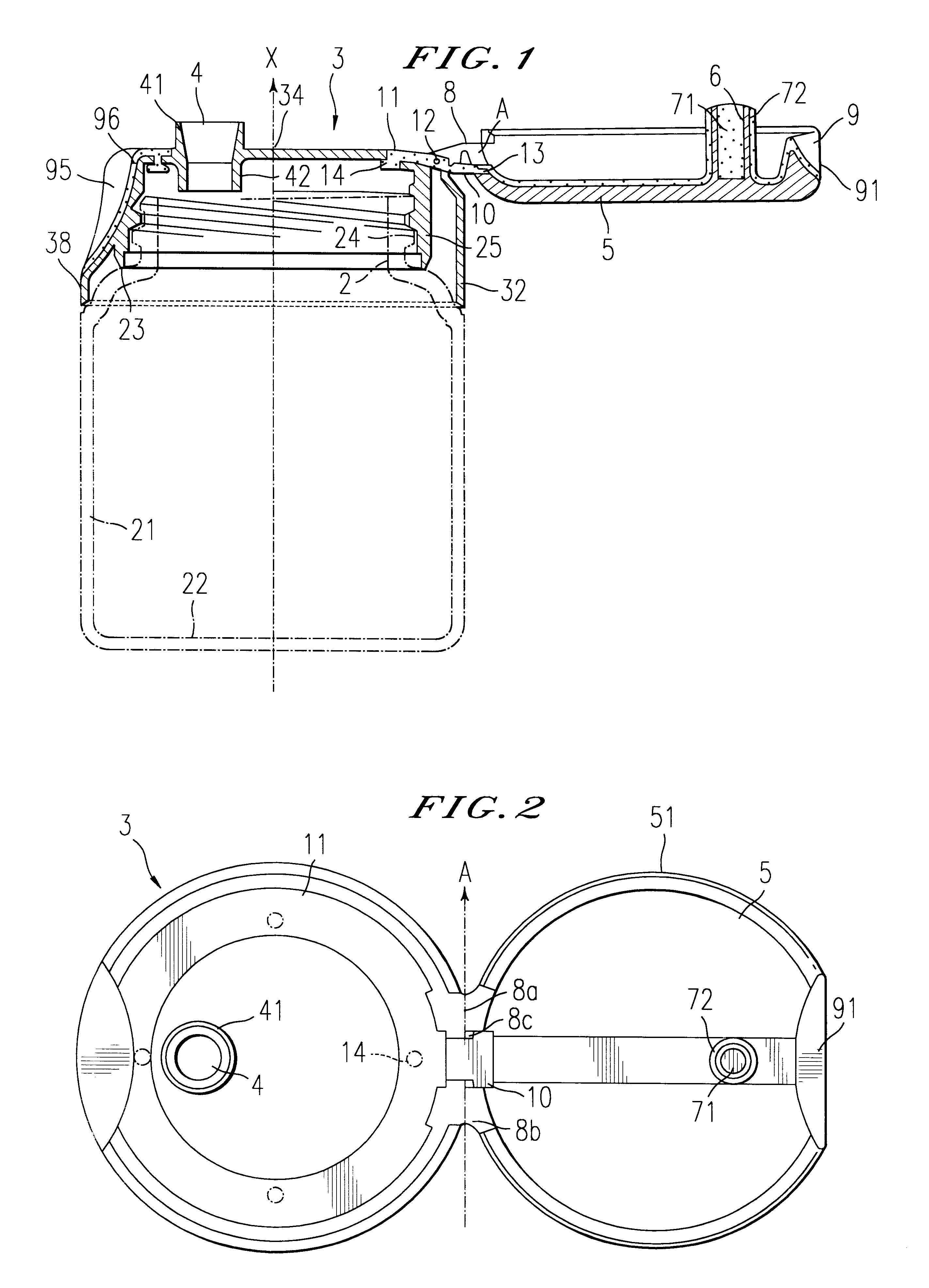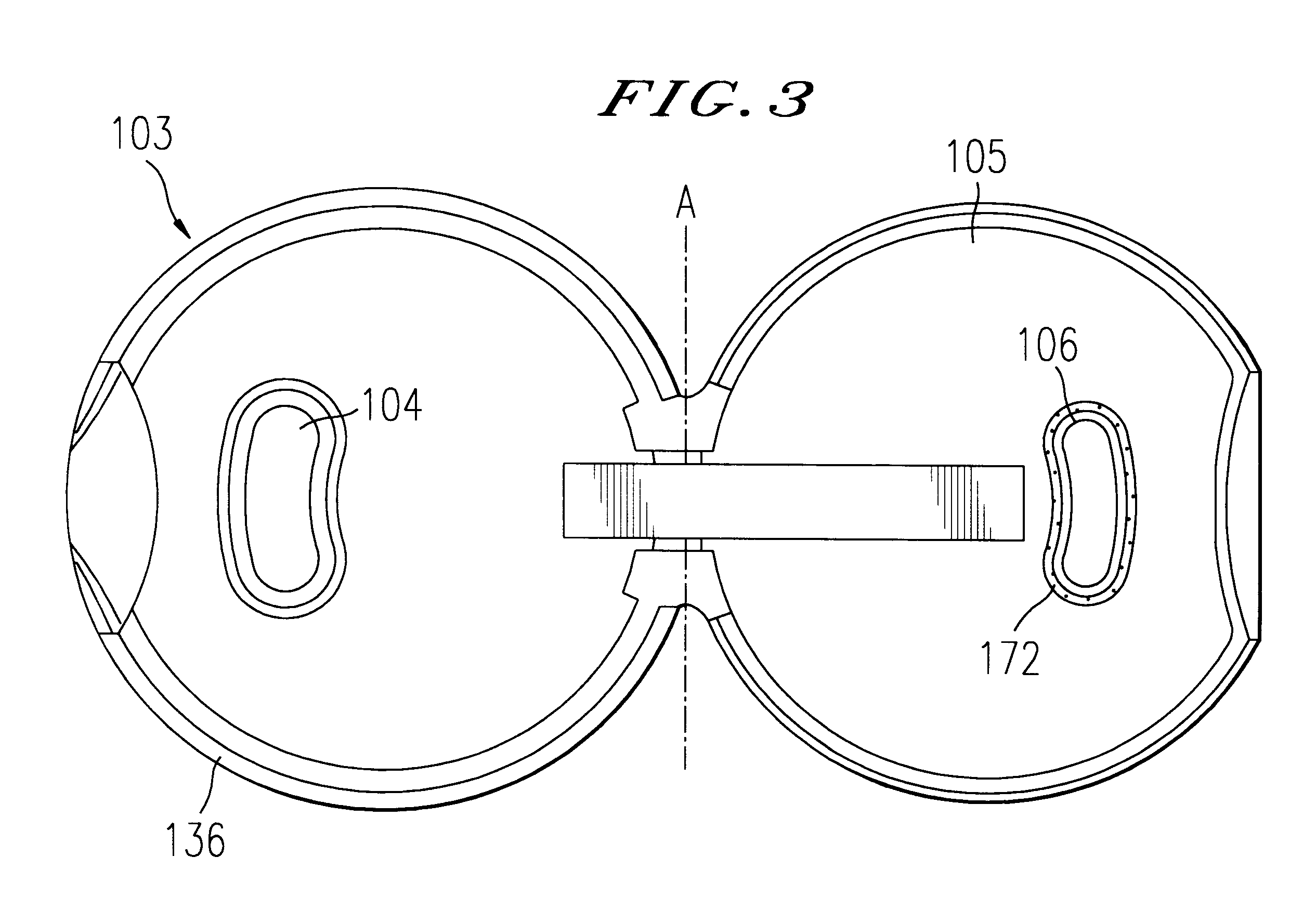Dispensing cap with improved tightness
a technology of dispensing orifice and tightness, which is applied in the direction of liquid dispensing, closure lids, closure stoppers, etc., can solve the problems of product leakage, difficult dimensional adjustment, and relatively high amount of force needed to engage the pip in the dispensing orifi
- Summary
- Abstract
- Description
- Claims
- Application Information
AI Technical Summary
Benefits of technology
Problems solved by technology
Method used
Image
Examples
Embodiment Construction
With reference to FIG. 1, it is possible to see a dispensing assembly denoted overall by the reference 1, comprising a container 21 having a longitudinal axis X, fitted with a dispensing cap 3 provided with a body referenced 32. The container 21 has a closed bottom 22, and at the opposite end from the bottom, a neck 2 with an external screw thread 24 for attaching the cap body 32 to the container. For this, the cap body has a cylindrical internal skirt 25 with an internal screw thread that complements the screw thread 24 on the neck 2. The container 21 has a circular or oval overall cross-section, this cross section may be any kind, for example polygonal or asymmetric. It is made, for example, of high density polyethylene. The cap body, for its part, is made of a rigid material, such as polypropylene.
The body 32 of the cap 3 has a plateau 34, provided over a portion of its periphery, with a film hinge 8, via which a lid 5 is articulated, allowing this lid to pivot about an axis A co...
PUM
| Property | Measurement | Unit |
|---|---|---|
| Thickness | aaaaa | aaaaa |
| Elastomeric | aaaaa | aaaaa |
| Flexibility | aaaaa | aaaaa |
Abstract
Description
Claims
Application Information
 Login to View More
Login to View More - R&D
- Intellectual Property
- Life Sciences
- Materials
- Tech Scout
- Unparalleled Data Quality
- Higher Quality Content
- 60% Fewer Hallucinations
Browse by: Latest US Patents, China's latest patents, Technical Efficacy Thesaurus, Application Domain, Technology Topic, Popular Technical Reports.
© 2025 PatSnap. All rights reserved.Legal|Privacy policy|Modern Slavery Act Transparency Statement|Sitemap|About US| Contact US: help@patsnap.com



